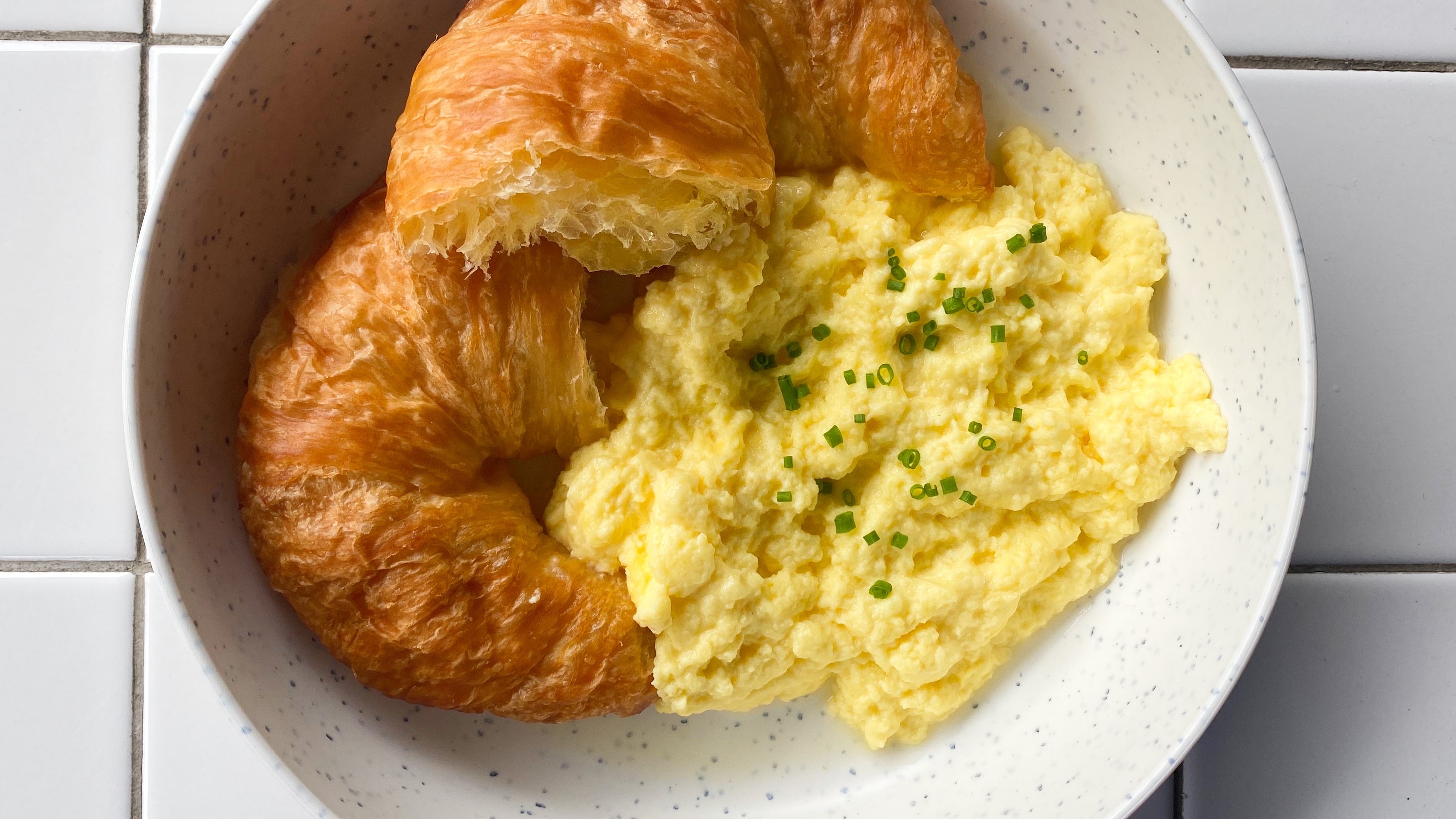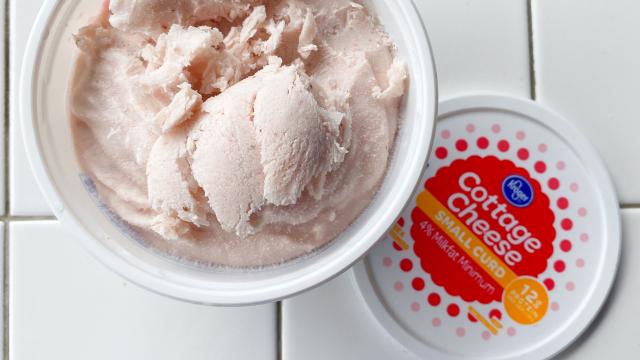TikTok is Pinterest for the younger generation. It’s where they go for recipes, product recommendations, and tips that will “change your life.” TikTok is their Pinterest, and cottage cheese ice cream is their banana ice cream.
If you were on Pinterest during its height of popularity, you likely saw this “ice cream.” It’s just a frozen banana, blended with cocoa powder and (sometimes) peanut butter until it reaches a soft serve consistency. If you like chocolate-covered frozen bananas, you would probably enjoy it. I enjoy it myself.
Of course, it has a diet food quality to it. It’s a substitute for ice cream, so you don’t eat the “bad” ice cream. Banana pancakes give me similar feelings, not because there is anything naturally restrictive or punishing about bananas, but because these substitutes are often coded as “better” for you than the guilt-inducing “real thing.”
Wanting to be thin is less cool than it was a decade ago, when Pinterest was at its peak; meanwhile, body acceptance is more mainstream and is rapidly being commodified. How we talk about food substitutions has shifted as well. Instead of “cutting calories,” we’re “adding protein.” And people are using cottage cheese to do just that.
At face value, this is fine. As someone who has been powerlifting for a little over a year, adding protein is something I’ve been doing a lot of. I also love cottage cheese and am delighted to see it gaining popularity. I love watching the youth discover the simple joys of cottage cheese bowls and whipped cottage cheese — I even made the cottage cheese pasta sauce and found it pleasing. But we are asking too much of curds and whey. We want cottage cheese to be everything — from breakfast to dessert — and often it’s just not working.
The problem with some cottage cheese recipes
Two recipes I often see on TikTok and Instagram are cottage cheese scrambled eggs and cottage cheese ice cream. I was excited about the eggs and curious about the ice cream, but both have the same issue: texture.
But before we talk about the texture, let’s address the idea that it’s an easy way to “add more protein.” An egg contains 6 grams of protein and 5 grams of fat; a 1/4 cup of cottage cheese — the amount most influencers will tell you to add to your eggs — contains 6 grams of protein, and 2 1/2 grams of fat. You could just as easily add another egg, and get the exact same amount of protein with only a few more grams of fat. It’s almost like this isn’t really about “getting more protein. (Also, it’s not that deep. The easiest way to add more protein to your scramble without “extra” fat is to add egg whites.)

Then there’s the claim that these eggs come out “fluffy and light.” If you have have ever eaten truly fluffy scrambled eggs, you can tell these eggs are neither of those things. Egg curds compete with cheese curds, and the result is a disjointed scramble that feels grainy and spongey on the tongue. I tried blending the eggs and cheese together with an immersion blender to smooth things out and aerate the mixture, but the grainy texture persisted. The added moisture from the cottage cheese also caused some issues; even after the eggs were fully set, the water from the cheese hadn’t fully evaporated. It continued to leak out of the scramble once plated, which sogged out my croissant and made me unhappy. If you want “more protein in your eggs,” just add another egg — or some steak, perhaps.
Then there’s the ice cream.
I tried this recipe three different ways: Once as presented in the video, once with 1/4 of strawberry jam as the sweetener (instead of maple syrup), and once with 1/4 cup of strawberry jam and a tablespoon of sweetened condensed milk. All three sucked.
The problem wasn’t the flavour. I’m a huge fan of cheese and ice cream, even “weird” cheeses like blue cheese and chèvre, so I didn’t mind the salty, slightly tangy flavour, especially when paired with sweet strawberries. It did taste kind of like strawberry cheesecake, and the blended batter tasted and felt pretty creamy before I popped it in the freezer. But that all changed once it was frozen.
Freezing is known to alter the texture of this particular dairy product and, in addition to the ice crystal issues that plague so many no-churn recipes, the ice cream felt squeaky and bouncy — almost rubbery on the teeth — much like isolated cottage cheese curds. If you were craving ice cream and ate this, you would not be happy.
Disparaging these recipes may seem like low-hanging fruit, and I try to only write about things I enjoy (like the cottage cheese sauce, for instance), but half of these recipes are orthorexia re-packaged as “getting more protein,” and they don’t taste good. Cottage cheese, served in a bowl, with a little salt and pepper, tastes great. It’s creamy, tangy, a little salty (even before you add the salt), and way easier to prepare than these “high-protein recipes.”
If you need “more protein,” eat a bowl of curds and whey. If you need ice cream, eat some real ice cream. You’ll be much more satisfied in each case, and you won’t have to break out the immersion blender. (And if a thin white woman with dead eyes and brown hair tells you that something is “soooo good,” take it with a flake of Maldon salt.)

Leave a Reply
You must be logged in to post a comment.